Arbor Day and Earth Week
‘Archetype of our oneness with the earth’We used to call it Arbor Day. On the hinge between Aries and Taurus, when the Sun enters this celebratory earth sign in the western zodiac calendar: that’s the day John Muir was born in 1838. A native Scot who emigrated to the United States and changed the face of a nation, Muir was the original arborist: lover of trees.
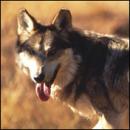
Wolves being hunted to extinction following a change in legislation to the US Endangered Species Act
Muir had similar adversaries. A naturalist and explorer of nature, his favorite wildernesses were in northern California, and it is there that his perseverance eventually paid off.
His activism was instrumental in saving swathes of western wilderness which eventually became the National Parks of Yellowstone, Yosemite Valley and Sequoia NP. The Sierra Club, which he founded in 1892, is now the most important (and vociferous) conservation organization in the United States.
His essays, letters and books have been read by millions.
At first, however, his petitions to conserve large areas of natural beauty were ignored. In the USA, it was a time of railroad expansion, the explosion of large cities, and big business in politics and in agriculture.
In his opinion, the high Sierras and other wild mountainscapes were being ravaged by livestock grazing (especially sheep, which he termed ‘hoofed locusts’). He personally spent weeks, sometimes months, in this high country, documenting and writing about the need to allow areas of such magnificence protection from grazing and (by analogy, its later counterpart,) the human and vehicular footprint.
He was persistent and he was inspired. The wild nature of California captivated him, from his first moment of exposure to its awesome grandeur.
“We are in the mountains and they are in us, kindling enthusiasm, making every nerve quiver, filling every pore and cell of us” John Muir
He had, after all, grown up in rural (but ‘tamed’) Scotland, where the wildcat was close to extinction, where wild boar no longer existed outside zoos, and where in his grandfather’s time a royal patron, King George I (‘Big Geordie’), had commissioned a granite bridge over a tributary of the River Dee at Invercauld, so he could be wheeled from Ballater to the hide to shoot; and where, incidentally, he is credited with killing Scotland’s last wolf in 1722.
Muir saw huge vistas of the Cairngorms, Deeside, Donside and the Ladder Hills have their natural tree populations annihilated by sheep, deer and rabbit. He dreamed of a world that might be otherwise.
Muir arrived in San Francisco in 1868, and immediately set out to spend a solitary week in Yosemite. He later built a cabin there, where he lived for three years. For months at a time he would wander alone in the wilderness, making notes, carrying ‘only a tin cup, a handful of tea, a loaf of bread, and a copy of Emerson.’ It is here that he and his correspondent-in-Nature Ralph Waldo Emerson eventually met in 1871; Emerson traveling from Harvard to meet the man who lived the life he merely wrote about. His visit lasted only one day, but he promised assistance, and offered Muir a teaching position at the prestigious university, which Muir declined. ‘My work is here’, he said.In 1872, the first National Park was created by federal legislation, on the strength of Muir’s efforts, at Yellowstone, Wyoming. It was to be the precursor of many others in the continental United States, including a total of nine national parks, now administered within the State of California by the National Parks service.
After his meeting with Emerson and over the following twenty years, Muir gathered, collated and compiled volumes of data on geology, natural history and plant and animal life populations of the Sierras. He envisioned Yosemite and the Sierra mountain range as pristine lands where original wildlife might roam, breed and proliferate, unimpeded by artificial (human) regulation. It was a difficult concept to instill. And his vision suffered throughout his life, wherever conflict surfaced between wilderness and ‘business.’
In one respect he was visionary, in doggedly hounding US Congress, and in writing for pro-conservationist magazines and organizations.
‘“Few are altogether deaf to the preaching of pine trees. Their sermons on the mountains go to our hearts, and if people in general could be got into the woods, even for once, to hear the trees speak for themselves, all difficulties in the way of forest preservation would vanish.”
In 1873 and 1874, he made field studies along the western flank of the Sierra Nevada, on the distribution and ecology of isolated groves of Giant Sequoia, one of the few redwood groves left in the world in virgin stands. In 1876, the American Association for the Advancement of Science published Muir’s paper on the subject. In his personal essays, however, he valued nature for its spiritual and transcendental qualities.
In 1903, after an inspirational (but chilly) night in a tent at Glacier Point with President Teddy Roosevelt, whom Muir was invited to take ‘to the wilderness’, the President rearranged bureaucratic legislation, and consolidated the boundaries of Yosemite, which had been split and decimated for earlier conflicting ‘business interests.’“Muir has profoundly shaped the very categories through which Americans understand and envision their relationships with the natural world.”
Many wilderness areas are named after him: from Muir Woods and Muir Beach in Marin County, north of San Francisco, to the 211-mile John Muir Trail, which runs from Yosemite through King’s Canyon NP and Sequoia National Park, to the 14,500-ft peak of Mount Whitney in central California. A glacier in Alaska bears his name. He was instrumental not only in establishing the structure which became National Parks, but in the resulting expansion of National Forests, including areas with protected ‘Reserve’ status. In addition, State Parks now proliferate throughout the US. California, alone, has twelve regions of state parks (CSPs) administering 278 parks on 1.4 million protected acres.
So, what has happened in the bigger picture?
John Muir would be delighted to know that in 1964, the US government passed the Wilderness Act, to protect around nine million acres of wilderness. Arbor Day was traditionally a celebration conceived in the midwestern state of Nebraska (a treeless zone), as a springtime event to encourage the young to plant a tree. And two Earth Days appeared on the American calendar–one ratified by the United Nations and celebrated on equinox, March 21st–when both hemispheres receive equal amounts of light and dark and when the sun appears to stand directly overhead on the equator; the other, April 22nd, has gradually superseded Arbor Day; their celebrations now interchangeable.
Recently, with the advent of the blog, acceleration of internet communication and a focus on Earth-related activities, New Earth consciousness, Earth Day has expanded into ‘Earth Week‘. That, too, would please Muir.
But what of his homeland? the sheep-munched treeless wilderness of northern Scotland?
Cairngorms National Park was established in 2003, the largest of 12 national parks in Britain at 1400 square miles, literally 10% of the landmass of Scotland. Stretching from Grantown-on-Spey (north) to Glen Clova in Angus (south) and from Ballater on Deeside in Aberdeenshire (east) to Laggan and Dalwhinnie (Aviemore) on the A9 (west). Its supporters describe great vistas, mountainous peaks (all less than 4000ft) and the Tourist Board of Scotland heralds it a shelter for a quarter of Scotland’s threatened species, and home to 25% of its native trees.That in itself is disturbing.
Its ‘Angus glens’ the ‘haunt of red deer and golden eagle’; ‘heather moor vivid with summer color’, and ‘wild tundra of high mountain tops’ tell the story.
Brief historical recap: in the early 14th century, Robert the Bruce murdered his (Comyn) rival for the throne of Scotland and pursued his son through the hunting forests of Aberdeenshire until he cornered him in his coastal Buchan fortress and – having proclaimed himself monarch – confiscated what was left of Comyn lands. On the ‘royal’ progress north, every last indigenous native Caledonian pine was either burned to the ground or used as live torches to light the way of the conquering army. This deliberate extinction of the species–and the wildlife it harbored–was Bruce’s way of destroying the Comyn hunting forests, themselves a symbol of wealth and source of self-regenerating food and fuel supply. His act (colloquially called the ‘Herschip o’ Buchan’, harrying of Comyn lands in Buchan) totally changed the face of Aberdeenshire, from which it has never recovered.What Robert Bruce’s actions created – a treeless raised beach from the Grampian mountains to the sea – was not replanted. Except for small pockets on landed estates where tree regeneration was encouraged, an agricultural zeal took over the desolate wasteland, capitalizing on open countryside with few obstructions.
In the 18th and 19th centuries, Highland estates cleared out their resident employees–crofters–to make way for agricultural innovation: turnips and sheep. While these ‘clearances’ were more specific to Caithness, Sutherland and the western portions of Scotland, some effects were felt in what is now the Cairngorms National Park. Where sheep were introduced, trees died; were not replanted; not allowed to regenerate. Where deer population had been nurtured and maintained in small numbers in remnant natural forests, for hunting, with the exit of human monitors, they overpopulated and devastated their own environment.
Thus, the Tourist Board’s ‘heather moor with vivid summer color’ and ‘wild tundra’.
The tourist brochure’s proclaiming its 1400 sq.miles as “harboring one quarter of the nation’s native trees” is also misleading. One tenth of the landmass containing one quarter of the nation’s pine, birch, aspen and alder? sounds a little drastic. Especially if compared with John Muir’s Yellowstone. Yellowstone’s 2.2 million acres, or 3.5 thousand square miles, has more trees per acre than all of Scotland put together. It is true that Aberdeenshire, a region half the size of Switzerland, still has fewer indigenous trees than it should–for its kindly climate–support. But that number is growing: private plantations are beginning to take hold again.The good news is the story of Glen Affric: and Trees for Life. This Scots charity has gradually (through donation) been purchasing 600 square miles of ancient Caledonian remnant forest west of Inverness, and has begun the mammoth task of replanting original species of oak, alder, Caledonian pine, juniper, birch and rowan (mountain ash).
While their goal is not to service the forestry industry, but rather to provide habitat for original animal, insect and plant subspecies, (with the possible future reintroduction of wild boar and wolf being tentatively suggested), the group recognize that some felling and forestry operations may be appropriate.‘We envision our work to restore the Caledonian Forest as not only helping to bring the land here back to a state of health and balance, but also having global relevance, as a model for similar projects in other countries.’
Other small parcels–once adjacent to hillfarms, and escaping the ‘set-aside’ agricultural brainstorms of the 1980s–were maintained by individuals, and planted with pines, which are now starting to look mature.
John Muir would indeed be proud of his ancient heritage and the inspiration it has given new groups to start again.
The best news, however, is back in California.In Muir’s time, after the (1848) Gold Rush, California was inundated with new immigrants. His beloved trees came under great threat. In the 1880s four hundred sawmills north of San Francisco were churning out lumber from felled redwood giants–a process which accelerated after the 1906 earthquake–in a need for timber to rebuild the city. In 1920, however, the Save the Redwoods League began purchasing groves that would become the backbone of California’s redwoods parks. It continues adding to this day.
In the 1950s–the post-war boom–lumber mills were cutting in excess of one billion board-feet of timber per year, a level maintained until the mid-1970s, when clear-felling vast acreage of virgin trees was still allowed.
…Until science and sense stepped in.
Science argued, but the battle was won by 1990s tree-sitters, those brave souls who camped out in makeshift treetop platforms while Caterpillars, chainsaws and chokesetters bumped and strained and devastated beneath them.
To explain:
In 1905, the Murphy family started Pacific Lumber, believing that by leaving some of their old growth redwoods standing, they could sustain an industry, well into the 21st century. But Pacific Lumber was purchased (by hostile takeover) in 1985, by Houston-based Maxxam, and clear-felling became the norm. Like the Amazon rainforest, Maxxam were clear-cutting eighty acres of California redwoods at a time–eating into the company’s (and the State’s) last remaining virgin stands. When CEO Charles Hurwitz attempted to clear-cut the largest remaining block of old growth redwood, in Headwaters Forest in Humboldt County, in 1990, tree-sitters — ‘Forest Defenders’ — scaled remaining giants the size of a Boeing 707, and moved in.They were supplied food and refreshment by allies via pulleys, by night, their hoists and ropes removed and burned by loggers, by day. Tempers ran high; lives were lost; protesters murdered. But State legislature listened and stepped in.
Headwaters Forest was purchased in 1999 by State and Federal government agencies, and put under permanent protection. Clear-felling practice was legally reduced to a 20-40-acre maximum.
The logging industry finally sat up and paid attention. Its own resource was decimated; salmon runs and ecosystems had suffered in a mindless race for economic gain, with only ‘table scraps’ left, in the view of Humboldt State University forest scientist Steve Sillett. ‘The challenge now is to improve management on the 95% of redwood landscape (felled) that is just starting into regrowth.’
Growing trees like a crop of grain is no longer the enlightened view. Scientists from HSU have discovered that the older the redwood, the harder and more disease-resistant is the wood, and the tougher its ability to withstand weathering, damage; i.e. you get more value out of one 1000-year old tree than a thousand 10-year olds. Forestry attitudes are changing too. Heavy Caterpillar earthmoving tractors, that caused such erosion (skid trails) and consequent pollution to streams and spawning pools, are being replaced by smaller, lighter shovel loaders on tracks which leave the forest floor intact. State law now enforces a mandatory buffer zone of trees, along streams and rivers, and salmon and other fish are returning.They are on target to create new forests (in one hundred years) like the ones protected in the Redwoods National and State Parks. Muir is by now roaring with delighted laughter in his (redwood) coffin.
So, when they ask you ‘what did you do for Arbor Day, Mummy or in Earth Week, Daddy?’ it may no longer be adequate to say you took the dog for a walk or raked leaves off the driveway. With renewed focus on the Earth, a show of determination coming from youth groups and in education, we may be inspired to show our ability to replenish, regenerate and restore parts of our planet we’ve been gifted as custodians, to bring back to life.
During Earth Week at least, the gardener in us is being asked to wake up.
©2010-2012 Marian Youngblood
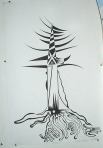
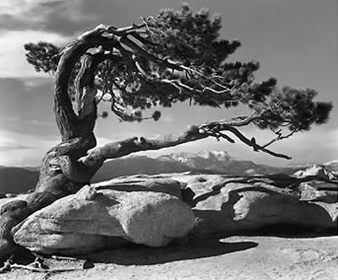
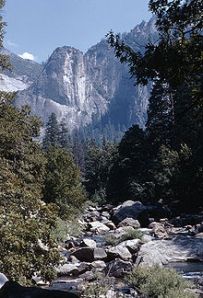
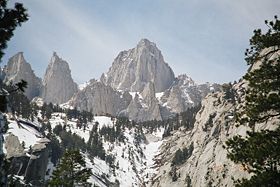
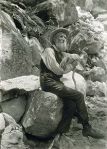
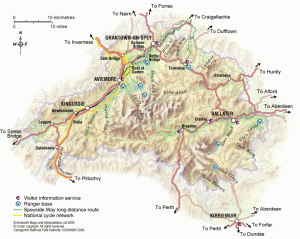
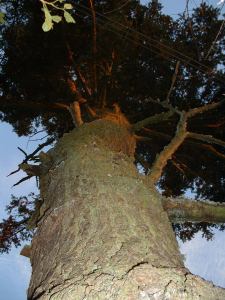
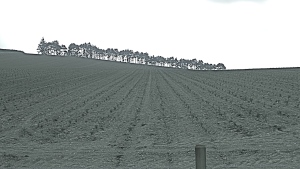
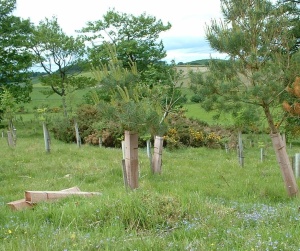
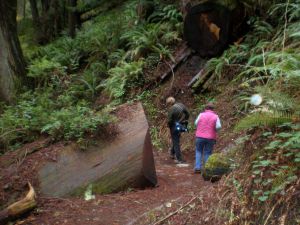
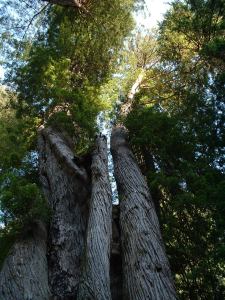
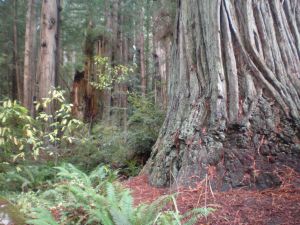






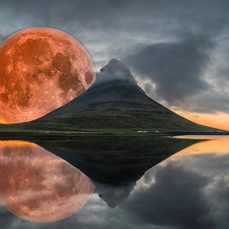



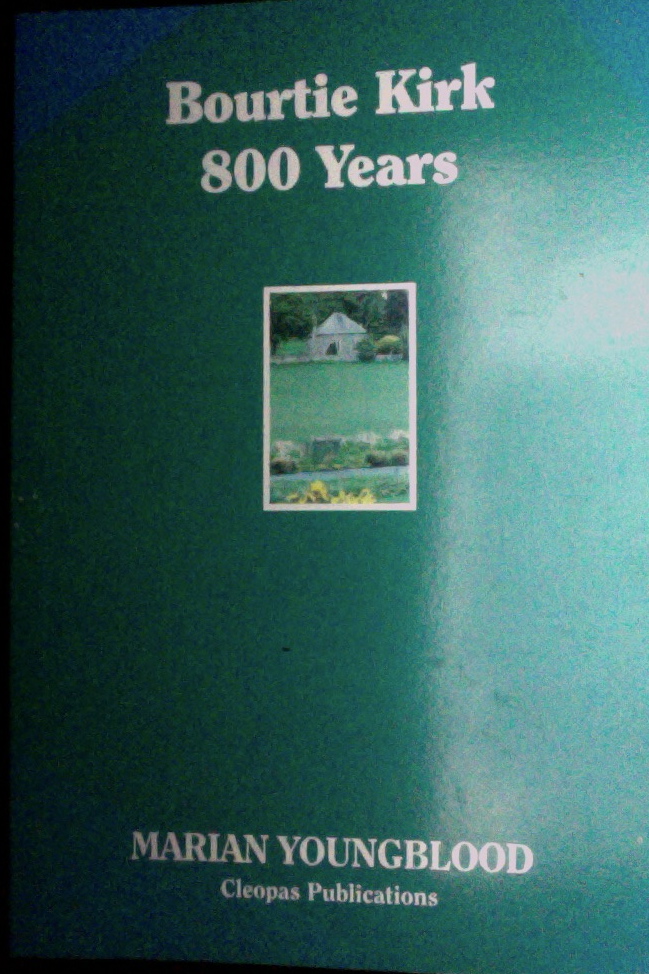

I saw a documentary some time ago about John Muir. I felt a true resonance, respect & honor for him & he was so alone~but not in reality. His true love was always with him in the mountains, trees, earth. I admire him deeply & appreciate all his efforts to forsee that mankind would have to turn itself around.
The American Indians never saw the land as “wilderness” it was just earth. I think the white men settlers began to term it wilderness “as in to be conquered”. Bless his heart & all who follow after him in the presence of mind & spirit, to want to save these precious lands, animals, & trees.
I had no idea there were no wolves in Scotland!!! & the king that shot the very last~what an absolute waste. Mankind’s overpopulation is the cause for if not most, I would say all, of the world’s problems.
But to end on a happier note, it’s brilliant to see the man who is planting many species of trees to hopefully bring back the animals. Bless all these great people & you too Marian. great post of a lovely man etc.
I agree, Annie, and thank you for visiting & posting. I knew only a little about John Muir until I started researching for this piece and some of the things I found out were so gentle and dedicated. I didn’t know, for instance, that writing came with difficulty to him. So when Harvard offered him the job, it must have felt like a huge burden. He apparently wrote & rewrote thousands of times what he eventually published. Except for when he was actually in the wild places and taking notes or recording his awe. I think what he says about the mountains making every cell tingle – must have been spontaneous. Yes, I agree. There he was doing all that on his own for years and years & eventually succeeding.
Every time I step into the ‘North Woods’ after a plane journey from (tame) Scotland, I can see how he must have felt.
So much work still to do.
Thank you for your presence here xx
Marian, thank you for another wonderful article, filled with resources, poetry, wisdom, refreshing insights. I was just reading some of John Muir’s words as I was researching reconnection with nature – that passion he had deep within him translated into such passionate action in the real world.
What I remember most about Robert the Bruce is the story of the spider and the inspiration she gave him as he watched her attempt time after time to spin her web. Come to think of it, it’s timely inspiration right now, too, so many years later in my life. The great stories are always there to enlighten us!
Visiting your blog always lights up my day – I love your writing, your knowledge, your wisdom, and how you weave the myriad details together in your informative, entertaining, and inspiring posts. Finding you via the web ranks as a major highlight of 2010 that I hope to enjoy and appreciate for many more years. Not only your blogs, but your wise and compassionate friendship, too. I am so grateful to know you. Thank you, Marian.
Greetings from the very rainy mountains of Japan – Catrien Ross.
I would like to thank YOU, Catrien: for your support and friendship and for kind words, when in fact I know you know what it takes to research and discover all kinds of enlightening revelations one never explored before.
I appreciate, for instance, that in your own blog mention was made of the wonderful celebration still held in Japan as the ‘wave of (cherry) blossom moves north’. I am grateful such national consciousness still exists to await the return of spring. I have a vision of flowering trees coming into bloom first in the south and then, as the weather improves in its northerly glide, wave upon wave of humans celebrating the blossoming trees. Would that other nations were so aware of their local beauty.
I have seen the (millions of) cherry trees which bloom in the US capital. It is a sight which gladdens the heart: where such dark legislation (as the return of wolf slaughter) can be mitigated by such light in Nature. I think there is yet hope for our species.
And forgive me for mentioning the ‘other’ side to Robert the Bruce. We children were weaned on his being restored to resolve and determination by his vision of a spider in her cave. It is that determination of his which decimated the Caledonian pine forest and it rarely appears in historical record. I just like to set things straight, sometimes! 🙂
Thank you for returning here. Your words are always an inspiration.
Marian, thank you, I am so glad you mentioned the other side of Robert the Bruce. It is that other side which has so often be veiled in the retelling of stories, so that a new image is formed, and sinister purposes supported. Just look at the story of Lincoln in the US – the other side is rarely mentioned, with almost nobody willing to set things straight.
Let’s leave the Bruce out of it – spiders spin within their own universe – and I have watched many a spider here in this wild mountain garden try and try again to weave an impossible web spanning an impossible space. And suddenly it is possible.
Your post also contains such disturbing news about the wolves – everywhere we turn in our world the wild animals are being decimated – such destruction in Asia and Africa. I skipped over your sentences about the wolves, and will not look right now. I will take it in later, along with what else is being perpetrated. Things are shifting rapidly, but not fast enough to stop this, it seems.
Thank you for your honest, brave light that looks at things as they are. You give us all courage.
Morning greetings from the rainy mountains in Japan – Catrien Ross.
[…] 1754-1835 (politician, writer, first to coin the word ‘statistics’). Or naturalist John Muir 1834-1914, founding father of the environmental […]
Pingback by Gab o’ May to Gemini June « Youngblood Blog | May 26, 2010 |
Reblogged this on Siderealview's Blog and commented:
Reposting because, if we continue to ‘forget’ about our growing human impact on the planet, it becomes yearly–and daily– more important to remind ourselves. John Muir believed in EarthFirst, and set in motion the Parks system so that we might perform our natural role …as guardians of our own wilderness… is this so outrageously difficult to fulfill?
Thank you for the effort and insight you pulled together with this post. It is a wonderful piece to hold in my heart and mind as we step out to tour Yosemite, Sequoia, and Death Valley this week in our personal celebration of the beauty of our Earth.